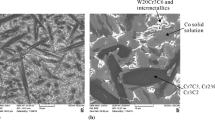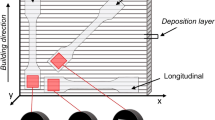We study the tribological properties of materials used as electrocontact inserts of the tram pantographs in couples with M1copper of the contact wires of power electric circuits. As promising materials for the pantograph insert, we considered the composites based on the MAX phases of Ti3AlC2, (Ti, Nb)3AlC2, and Ti2AlC and also on TiC and Al2O3. The highest wear resistance was detected for composites with a content of the MAX phase of structural modification 312 equal to 85–95%. The wear of these materials after 5 km of their operation under a contact stress of 0.25 MPa (which corresponds to the operating conditions) turns out to be 20 times lower than for the aluminum alloy used in the Ukraine for the production of pantograph inserts. The wear resistance of M1 copper also depends on the phase constitution of the material of inserts: in couples with composites based on 95% Ti3AlC2 + 5% TiC or 85% (Ti, Nb)3AlC2 + 10% TiC + 5% Al2O3, it was 4–5 times higher than in contact with aluminum alloy.




Similar content being viewed by others
References
V. V. Panasyuk (editor), Fracture Mechanics and Strength of Materials: A Handbook [in Ukrainian], Vol. 9: O. P. Ostash, V. M. Fedirko, V. M. Uchanin, S. A. Bychkov, O. H. Molyar, O. I. Semenets’, V. S. Kravets’, and V. Ya. Derecha, Strength and Durability of Aircraft Materials and Structural Elements, SPOLOM, Lviv (2007).
V. M. Fedirko, I. M. Pohrelyuk, and O. I. Yas’kiv, Thermodiffusion Multicomponent Saturation of Titanium Alloys [in Ukrainian], Naukova Dumka, Kyiv (2009).
M. Barsoum, “The Mn+1AXn phases: A new class of solid thermodynamically stable nanolaminates,” Progr. Solid State Chem., 28, No. 1–4, 201–281 (2000).
M. Radovich and M. W. Barsoum, “MAX phases: bridging the gap between metals and ceramics,” Amer. Ceram. Soc. Bull., 92, No. 3, 20–27 (2013).
T. Prikhna, O. Ostash, T. Basyuk, et al., “Thermal stability and mechanical characteristics of densified Ti3AlC2 -based material,” Solid State Phenom., 230, 140–143 (2015).
A. D. Ivasyshyn, O. P. Ostash, T. O. Prikhna, V. Ya. Podhurs'ka, and T. V. Basyuk, “Influence of technological media on the mechanical and physical properties of materials for fuel cells,” Fiz.-Khim. Mekh. Mater., 51, No. 2, 7–14 (2015); English translation: Mater. Sci., 51, No. 2, 149–157 (2015).
T. Prikhna, T. Basyuk, M. Karpets, et al., “Lightweight (Ti, Nb)–Al–C MAX-phases-based materials: preparation, structure, and properties,” in: Sustainable Industrial Processing Summit and Exhibition, Vol. 5: F. Kongoli, F. Marquis, and N. Chikhradze (editors), Marquis Internat. Symp. on New and Advanced Materials and Technologies for Energy, Environment and Sustainable Development (Flogen, 2017), pp. 367–386.
Q. D. Xiao and Z. L. Lv, “Current-carrying friction and wear characteristics of Ti3AlC2 by novel method of infiltration sintering,” Adv. Appl. Ceram., 111, No. 4, 202–207 (2012).
X. Huang, Y. Feng, G. Qian, and K. Liu, “Erosion behavior of Ti3AlC2 cathode under atmosphere air arc,” J. Alloys Comp., 727, 419–427 (2017).
D. N. Garkunov, Triboengineering [in Russian], Izd. MSKhA, Moscow (2001).
I. S. Efremov, V. M. Kobozev, and V. V. Shevchenko, Technical Means of Electric Transport [in Russian], Vysshaya Shkola, Moscow (1985).
I. S. Gershman, Yu. L. Bol’shakov, and V. G. Sychenko, “Compatibility of different current-collecting materials in the same segment of a contact wire,” Zaliznych. Transp. Ukrainy, No. 5, 52–56 (2008).
S. A. Serhienko and V. A. Koval’, Current-Collecting Sliding Element [in Ukrainian], Patent No. 77745 of Ukraine, Publ. on 25.02.2013, Bull. No. 4.
Author information
Authors and Affiliations
Corresponding author
Additional information
Translated from Fizyko-Khimichna Mekhanika Materialiv, Vol. 54, No. 4, pp. 131–136, July–August, 2018.
Rights and permissions
About this article
Cite this article
Prikhna, Т.О., Podhurs’ka, V.Y., Оstash, О.P. et al. Influence of the Technology of Production of Composites Based on the Max Phases of Titanium on the Process of Wear in Contact with Copper. Part 1. Two-Stage Technology. Mater Sci 54, 589–595 (2019). https://doi.org/10.1007/s11003-019-00222-1
Received:
Published:
Issue Date:
DOI: https://doi.org/10.1007/s11003-019-00222-1




